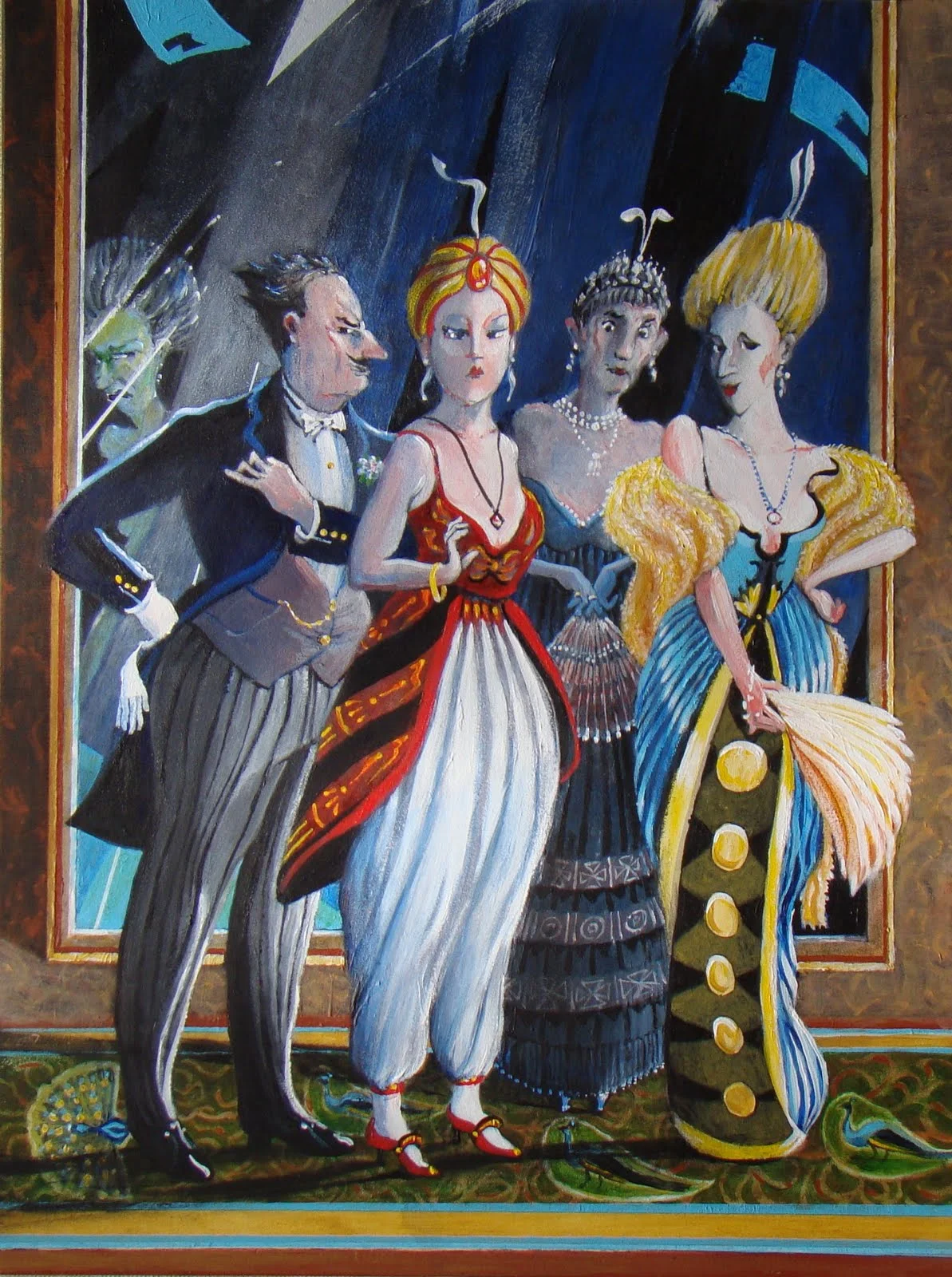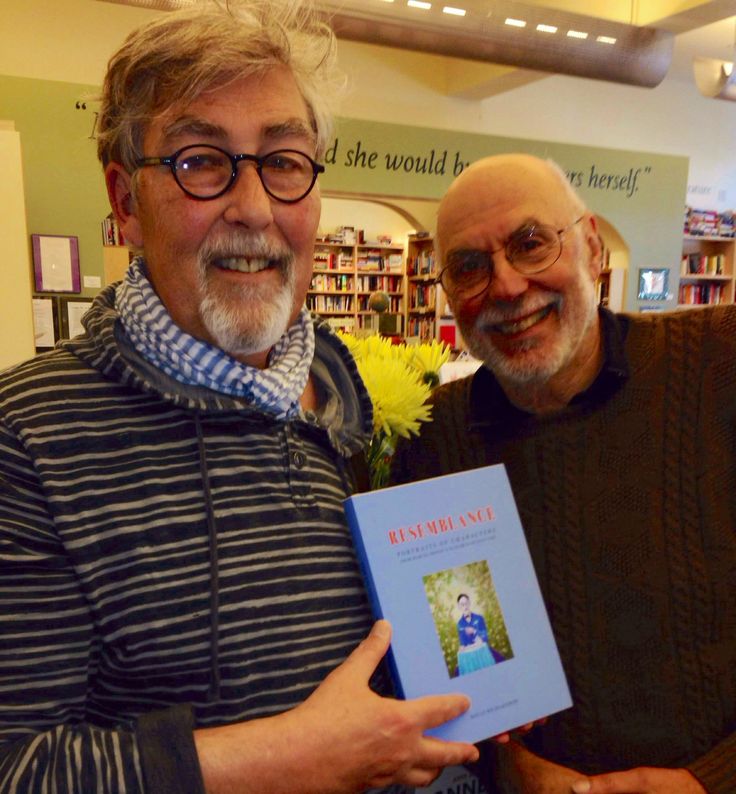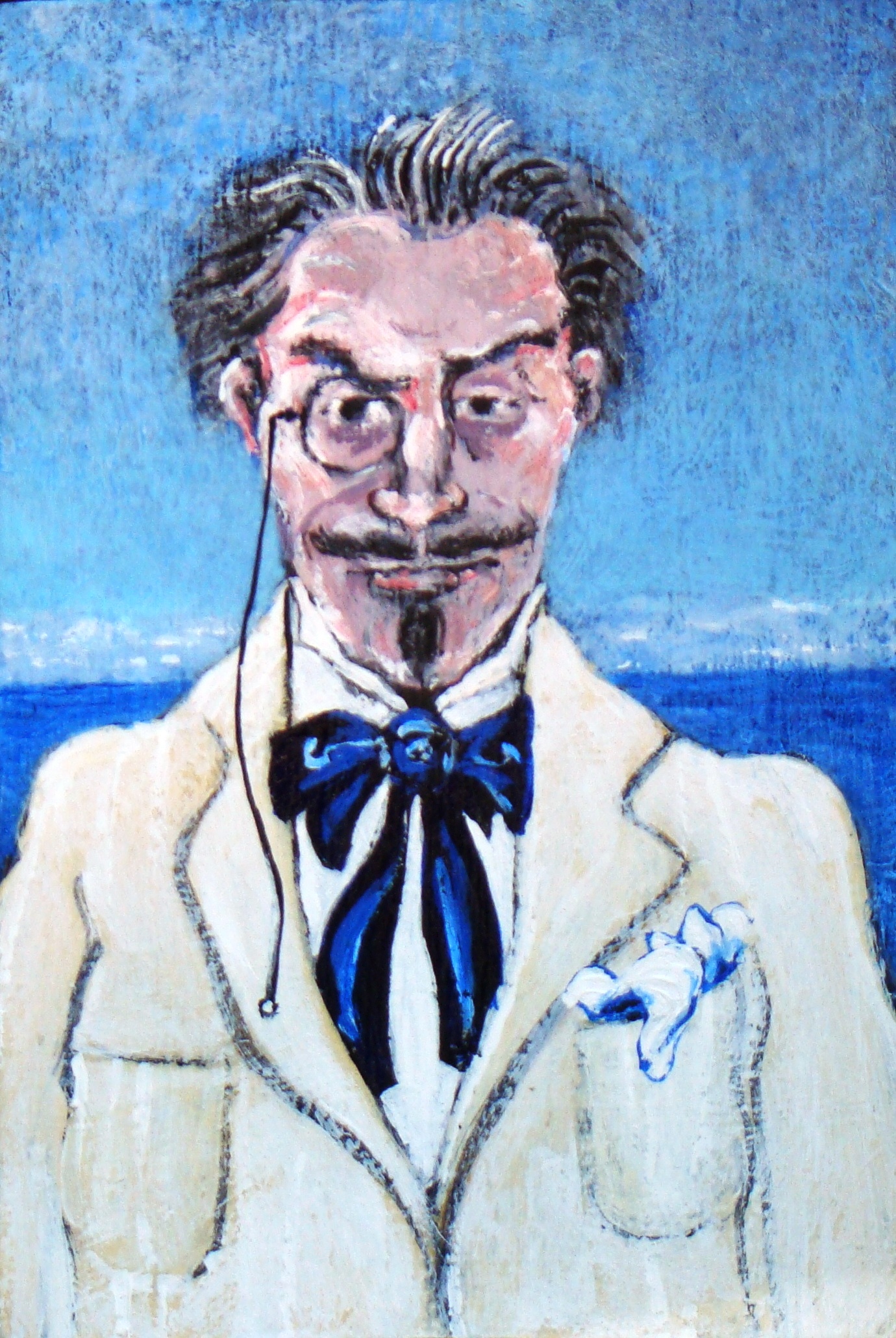David Richardson
David Richardson (left) with Larry Bensky (right).
Landscape, not portraiture, has been my primary genre as a painter. My notable illustration experience were drawings made for the first two articles of Hunter S. Thompson's "Fear and Loathing on the Campaign Trail", published in Rolling Stone Magazine in 1972. The portraits of Marcel's characters came as a surprise. Involuntary memory is important to us all, so too I think is involuntary inspiration. One morning, six months after finishing a first reading of À la recherche du temp perdu, I found myself with nothing particular to do, picked up a small piece of balsa wood, and with no one in mind painted the face and torso of a woman, an imagined figure, and left her on the easel. Three days later, looking at her, I realized she was Oriane de Guermantes and saw I could continue with the rest of the characters. I stopped when there were 56 characters and a few incidental illustrations.
It was not my intention to fix the images of the characters for other readers, indeed one might see Oriane's nose more beak-like, Gilberte's hair redder, Rémi more resembling Rizzi's bust of Loredan, and my depiction of the duc de Châtellerault stretches his age way past his encounter with the footman at Mme de Saint-Euverte's. Painting the characters allowed me to remain in Marcel's time while finding my own, and each character, plus others not yet painted, could be painted as many times, in as many ways as each appear in the novel. I came to Proust through a dear friend whose mentor was Wallace Fowlie. Years later, having no idea where it would lead, I began to read the novel. I think it's a measure of Marcel's genius that he allows his readers to trail away from his text onto pathways of their own. You can find all of Richardson's famous portraits on his website, Resemblance: The Portraits & etc.
Resemblance: The Portraits & etc.
Resemblance is a picture book of paintings inspired by Marcel Proust’s novel À la recherche du temps perdu, first translated into English as Remembrance of Things Past and later as In Search of Lost Time.
Proust wrote the novel between 1909 and 1922. It is extremely long, extremely heady, and it overflows with great heart and humor. Proust wrote about everything. He wrote about love and sex, the attraction of the bee to the blossom, he wrote about art, he wrote about humanity’s devotion to music. He wrote about science. He wrote about country life and city life and life beside the sea, the Belle-Epoch, the First World War, he wrote about the light in his bedroom and the light in Venice. He wrote about wallpaper, church façades, the telephone, the airplane, he wrote about religious bigotry. He wrote about the highest and the lowest society. He wrote about the meaning of time. He quite famously wrote about memory.
Proust’s characters evolve through an extraordinary expression of time and place. In Search of Lost Time describes the universal human condition as it describes the personal struggle of a man attempting to become a writer. Resemblance is my attempt to portray Proust’s characters from Proust’s words.
There are seventy-four characters in Resemblance, and four incidental landscapes. Each painting is accompanied by a passage from the novel.
Ordering information for the book can be found on his website http://www.davidwesleyrichardson.com/resemblance by clicking "Resemblance: The Book" on the home page, then opening "available here" at the bottom of that page, the line is in red, book info and purchasing options will be given, pay-pal, credit cards, etc. Prints of seven of the characters are also available for purchase on that page.












